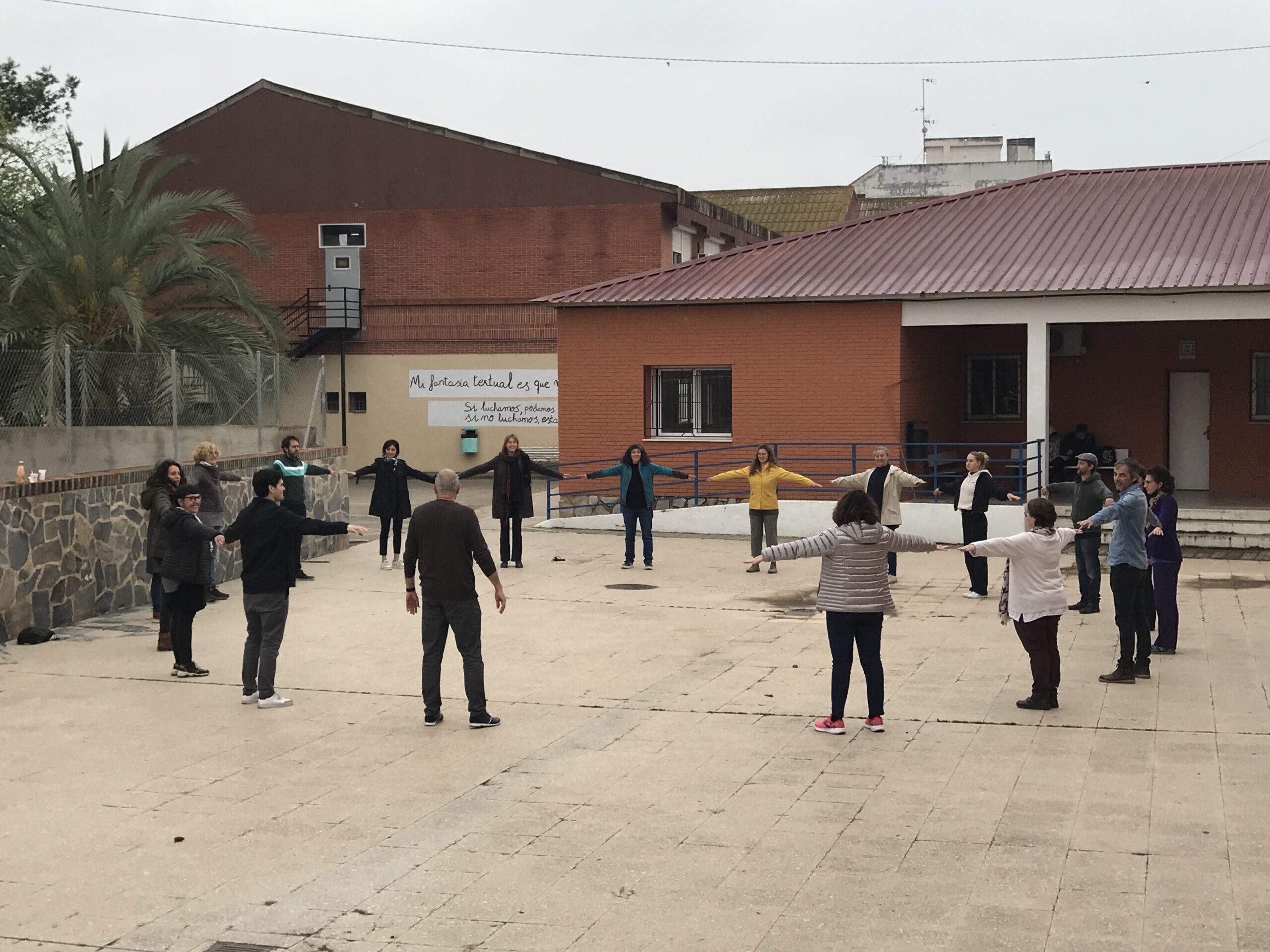
The project aims to create emotional learning experiences with the landscape for high school students. Through various activities conducted over five days, the project seeks to deepen the connection between students and their emotions, complement intellectual knowledge with emotional understanding, and foster team bonds, empathy, and assertive communication.



The classroom setting is the primary space for the project, with some sensory experiences taking place in the landscape under study.
The project employs a holistic approach that integrates body, mind, and emotion. Various activities include group dances, vocal exercises, theatrical scenarios, and sensory experiences to connect students with their emotions and the landscape.
The type of collaborative experience is primarily cooperative learning. Cooperative learning involves students working together to achieve shared goals, promoting mutual understanding, collective problem-solving, and the development of interpersonal skills. Here are some characteristics of the collaborative experience:
The primary learning space is the classroom, but some activities take students into the landscape being studied, providing a direct connection between emotions and the environment.
Basic materials such as comfortable clothing, chairs, and, optionally, objects of emotional value brought by students.
The initial or pre-assessment in the project «Emotional Relationship with the Landscape» is designed to gauge the emotional states of the students before engaging in the various activities. It serves as a baseline to understand their initial feelings and sets the stage for the emotional exploration throughout the project. Here are the key components of the initial assessment:
Formative evaluation refers to ongoing assessments and feedback mechanisms implemented throughout the various sessions. This type of evaluation is designed to monitor and support the students’ progress, allowing for adjustments and improvements in real-time. Here’s an overview of the formative evaluation components in the project:
The final evaluation in the «Emotional Relationship with the Landscape» project is a crucial stage aimed at gauging the holistic impact of the entire learning experience. This assessment occurs at the project’s culmination, allowing participants to reflect on the emotional journey they undertook. The evaluation is multifaceted, encompassing self-assessment and group discussions that encourage students to articulate and share their evolving emotional awareness.
Participants are prompted to express how the project has influenced not only their understanding of the landscape but also their personal and interpersonal growth. They discuss how the activities, ranging from dance and theater exercises to sensory explorations in the landscape, have contributed to their emotional well-being and perception of the environment.
The final evaluation acts as a platform for students to convey the connections they’ve established between their emotions and the surrounding landscape. It provides an opportunity for them to articulate the nuances of their experiences, offering insights into how the project has impacted their relationships, teamwork, and communication skills.
This reflective process is valuable for both individual and collective growth, fostering a sense of community and shared emotional understanding among the participants. The final evaluation serves not only as a conclusion to the project but also as a foundation for ongoing personal and collective emotional exploration.

